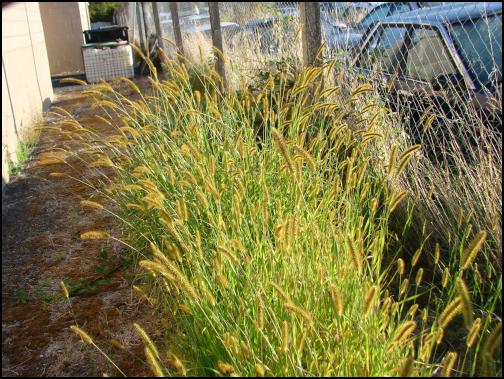Farmers urged to watch for yellow bristle grass

MEDIA RELEASE
Friday, January 16, 2015
Farmers urged to watch for yellow bristle grass
Horizons Regional Council is urging farmers to keep an eye out for yellow bristle grass, an invasive summer weed that spreads rapidly through pasture causing a loss in production.
Horizons environmental programme coordinator plant security Craig Davey says the grass is already affecting farming in Waikato and is easily transferred from roadside infestations, via stock movement and infested hay.
“Like a lot of weeds, yellow bristle grass is quick to colonise bare ground. Hot, dry conditions, poor machinery hygiene practices and spraying to bare earth can all exacerbate its spread,” Mr Davey says.
“Once established, it is a prolific seeder and becomes dominant in a paddock within a few years.
“While stock will eat it in its vegetative stage, the grass has poor nutritive value and stock avoid it after seed heads emerge in early January to March. There’s also evidence that the distinctive seed heads can cause lesions and ulcers to the mouths of grazing cattle.
“With this in mind, it’s worth checking areas of paddocks not utilised by stock for signs of yellow bristle grass.”
Yellow bristle grass is likely to have been present in the Horizons Region for decades and is known to exist along the state highway network and beyond.
The grass can be difficult to identify until it produces a seed head. In open pasture its first leaves tend to be parallel to the ground. They are yellow-green to green in colour and usually red or purple at the base.
On highly productive dairy farms, where yellow bristle grass is prolific, annual feed production may be reduced by up to 20 percent resulting in increased on-farm costs due to the need for supplementary feed and/or pasture renovation. The result is estimated to be a cast of about $1,100/ha.
Mr Davey encourages farmers to check out the distribution map on Horizons’ website as well as information on identification and control options.
“The best control is prevention; have as much other vegetation in place as possible and, in disturbed areas, instigate spraying as soon as possible,” he says.
ENDS


 Gordon Campbell: On NZ’s Silence Over Gaza, And Creeping Health Privatisation
Gordon Campbell: On NZ’s Silence Over Gaza, And Creeping Health Privatisation Government: Minister Of Finance’s Budget 2025 Speech
Government: Minister Of Finance’s Budget 2025 Speech The Prosperity Deal: Govt Budget Has No Plan For AI Job Loss – Citizens Launch The Prosperity Deal As The Only Workable Alternative
The Prosperity Deal: Govt Budget Has No Plan For AI Job Loss – Citizens Launch The Prosperity Deal As The Only Workable Alternative Greenpeace New Zealand: Greenpeace Braced For ‘Scorched Earth’ Budget From Govt
Greenpeace New Zealand: Greenpeace Braced For ‘Scorched Earth’ Budget From Govt NZ Police: Police Acknowledge Sentencing Of Donald Sarratt In Child Sexual Abuse Material Case
NZ Police: Police Acknowledge Sentencing Of Donald Sarratt In Child Sexual Abuse Material Case PSA: Ministry Of Education Workers Will Walk Off The Job For The First Time In Over 20 Years
PSA: Ministry Of Education Workers Will Walk Off The Job For The First Time In Over 20 Years Justice for Palestine: NZ Joining International Call For Humanitarian Aid To Gaza Welcomed, But Sanctions Need To Be Imposed On Israel Urgently
Justice for Palestine: NZ Joining International Call For Humanitarian Aid To Gaza Welcomed, But Sanctions Need To Be Imposed On Israel Urgently


